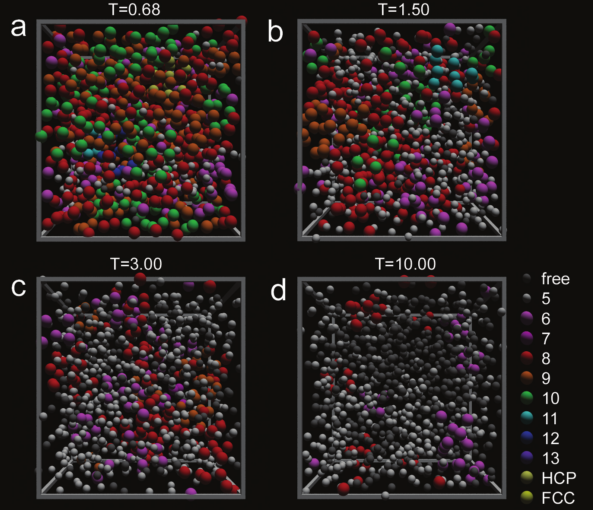Molecular Simulation of Liquids and Gels
Published:

Abstract
The combination of long range structural disorder and strong interactions means the liquid phase is not as well understood as the other principle states of matter. The development of liquid state theory has been slow as a consequence. The internal structure of a liquid is random when viewed on a large scale, but also displays ordering on a local scale. In particular the importance of energetically favourable clusters of particles called locally favoured structures (LFS) to local ordering was discussed by Sir Charles Frank in 1952. I simulate a fluid of Lennard-Jones particles to examine the internal structure near the phase boundary using molecular dynamics. A novel method called topological cluster classification is used to identify LFS in the bulk. I disprove a 1952 conjecture by Frank regarding the populations of icosahedral LFS in liquids, but find encouraging signals coupling LFS to the process of crystallization and dynamical arrest. Colloidal dispersions are ensembles of microscopic particles suspended in a solvent which display dynamics with similar phase behaviour to simple atomic and molecular systems. Under certain conditions they form metastable solids such as glasses, gels and crystals. I simulate the formation of colloidal gels in experimental dispersions using a basic model for inter-colloidal interactions and Brownian dynamics. I find the simulation results do not match the gelation witnessed in the experiments and discuss why this discrepancy arises
A. Malins
MRes in Complexity Sciences, Faculty of Science, University of Bristol, November 2008
supervisors: Dr Paddy Royall & Professor Jens Eggers
PDF: download
